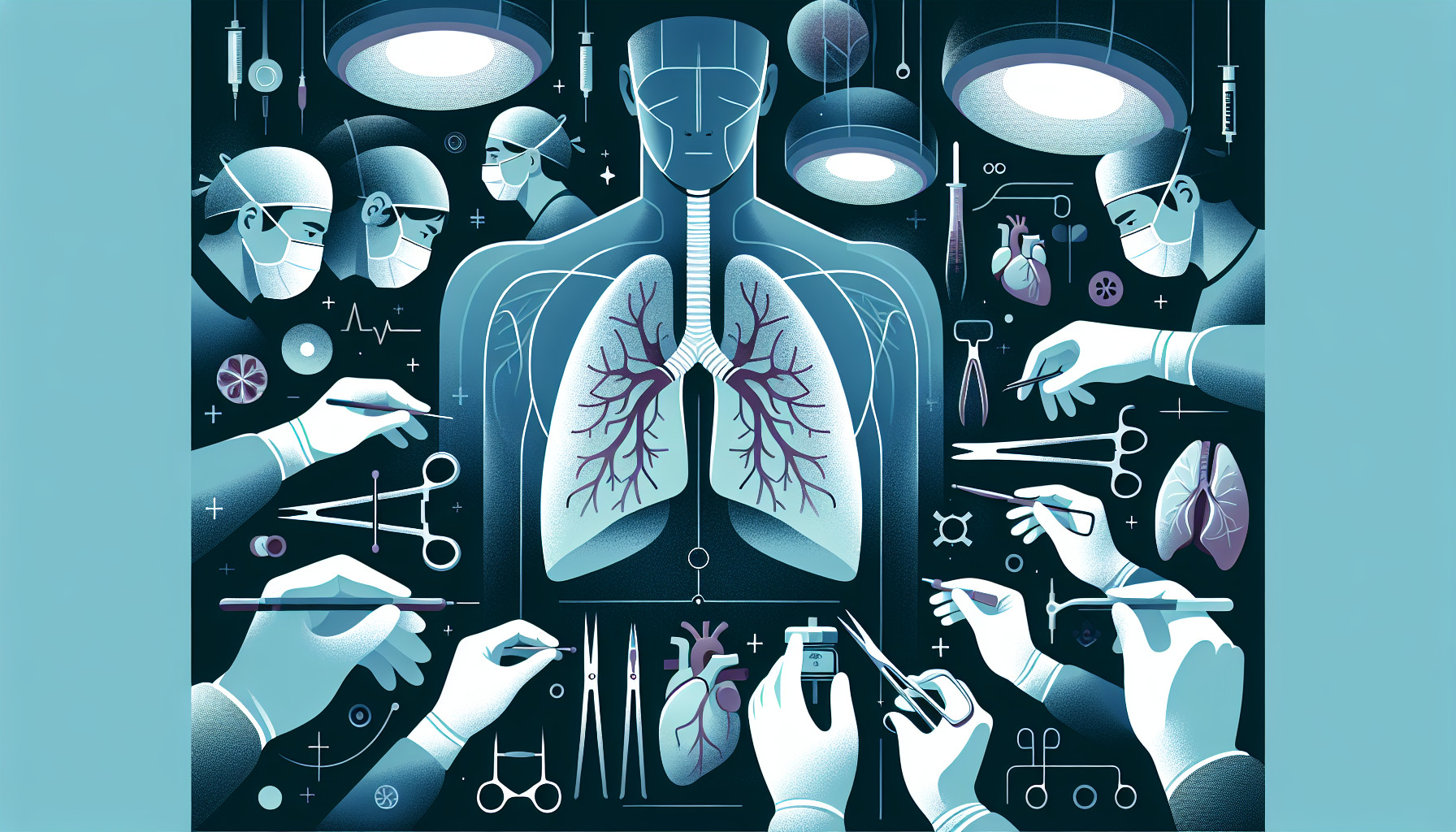Our Summary
This research paper discusses the complications that can occur after a lung transplant. Lung transplants are a common treatment for severe lung diseases and over 50,000 have been performed globally. Nearly 11,000 people in the United States are living with transplanted lungs. However, there are complications that can occur after the surgery, which doctors specialized in lung diseases need to be aware of. This paper reviews these complications, describing their symptoms and how they appear in medical imaging like X-rays and CT scans. The goal is to help medical professionals recognize both common and rare complications in patients who have received lung transplants.
FAQs
- What complications can occur after a lung transplant?
- How can medical imaging like X-rays and CT scans help in identifying complications after a lung transplant?
- What is the goal of the research paper discussing complications after lung transplant?
Doctor’s Tip
One helpful tip a doctor might tell a patient about lung transplant is to closely follow the post-transplant care plan provided by their medical team. This may include taking medications as prescribed, attending regular follow-up appointments, participating in pulmonary rehabilitation, and avoiding exposure to potential lung irritants such as smoke or pollution. By following these recommendations, patients can help ensure the success of their lung transplant and reduce the risk of complications.
Suitable For
Patients who are typically recommended for a lung transplant are those with severe lung diseases that have not responded well to other treatments. Some common conditions that may warrant a lung transplant include:
- Chronic obstructive pulmonary disease (COPD)
- Idiopathic pulmonary fibrosis
- Cystic fibrosis
- Alpha-1 antitrypsin deficiency
- Pulmonary hypertension
- Bronchiectasis
- Sarcoidosis
These patients often have severe symptoms such as shortness of breath, chronic cough, fatigue, and difficulty performing daily activities. They may also have a reduced quality of life and a decreased life expectancy without a lung transplant.
Before being recommended for a lung transplant, patients undergo a thorough evaluation to determine if they are suitable candidates for the surgery. This evaluation includes tests to assess the severity of their lung disease, their overall health and fitness for surgery, and their ability to adhere to the complex post-transplant care regimen.
Ultimately, the decision to recommend a lung transplant is made by a multidisciplinary team of specialists, including pulmonologists, transplant surgeons, nurses, social workers, and other healthcare professionals. This team considers the patient’s individual circumstances, the risks and benefits of the surgery, and the availability of donor organs before making a recommendation for a lung transplant.
Timeline
Before a lung transplant:
- Patient is diagnosed with a severe lung disease that is not responding to other treatments.
- Patient undergoes extensive medical evaluation to determine if they are a suitable candidate for a lung transplant.
- Patient is placed on the waiting list for a donor lung, which can take months or even years.
- Patient undergoes pre-transplant evaluations and tests to ensure they are physically and mentally prepared for the surgery.
- Once a donor lung becomes available, the patient undergoes the lung transplant surgery.
After a lung transplant:
- Immediately after the surgery, the patient is closely monitored in the intensive care unit.
- Patient will stay in the hospital for several weeks to recover and receive post-operative care.
- Patient will undergo regular follow-up appointments to monitor their progress and adjust medications as needed.
- Patient will need to take immunosuppressant medications for the rest of their life to prevent rejection of the donor lung.
- Patient will need to make lifestyle changes, such as quitting smoking and maintaining a healthy diet and exercise routine.
- Patient may experience complications such as infection, rejection, or other medical issues that require additional treatment and monitoring.
- With proper care and management, many patients can experience improved lung function and quality of life after a lung transplant.
What to Ask Your Doctor
What are the potential risks and complications associated with a lung transplant?
How long is the recovery process after a lung transplant, and what can I expect during this time?
What medications will I need to take after the transplant, and what are the potential side effects?
How often will I need to follow up with my transplant team after the surgery, and what ongoing care will I require?
What lifestyle changes will I need to make after a lung transplant to ensure the success of the procedure?
What signs or symptoms should I watch for that may indicate a complication or rejection of the transplanted lung?
How will my immune system be affected by the transplant, and what precautions should I take to avoid infections?
What is the long-term prognosis for patients who undergo a lung transplant, and what factors can affect the success of the procedure?
Are there any alternative treatments or therapies that I should consider before proceeding with a lung transplant?
What is the experience and success rate of your medical team in performing lung transplants, and what support services are available to help me through the process?
Reference
Authors: Tejwani V, Panchabhai TS, Kotloff RM, Mehta AC. Journal: Chest. 2016 Jun;149(6):1535-45. doi: 10.1016/j.chest.2015.12.019. Epub 2015 Dec 29. PMID: 26836903
